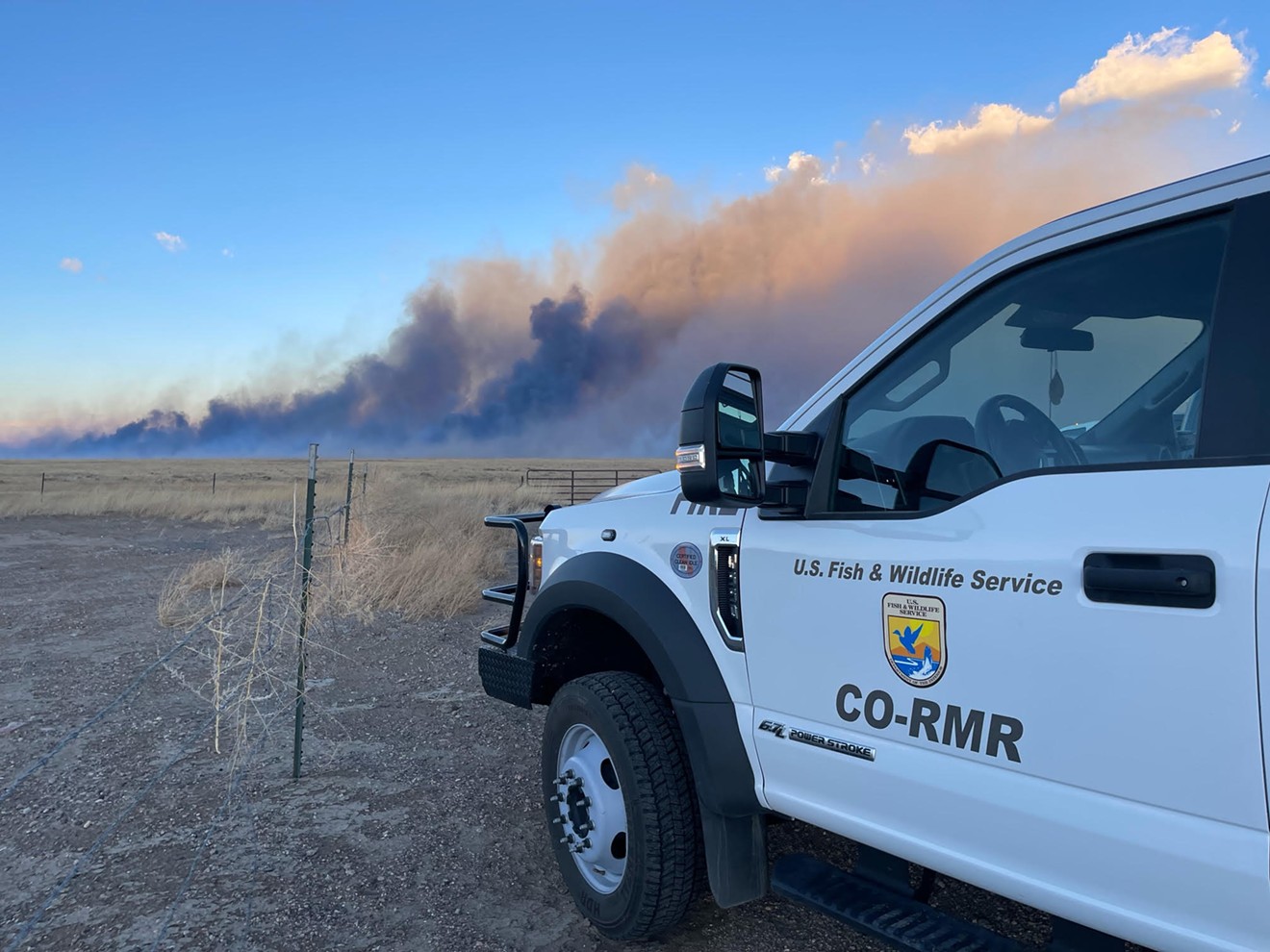The refuge comprises much of the former Rocky Flats Nuclear Weapons Plant, which created plutonium triggers for bombs. Fires at the plant in 1957 and 1969 caused some of the plutonium contamination that earned the site Superfund status; after it closed for good in late 1989, the plant was the focus of a $7 billion cleanup before 5,237 acres reopened to the public as a wildlife refuge in the fall of 2018.
But on December 30, refuge staffers were focusing on protecting the Candelas housing development to the south; both the refuge and Candelas were in the pre-evacuation area.
After the refuge and Candelas were removed from that list, the U.S. Fish and Wildlife team, led by refuge manager David Lucas, moved on to other firefighting efforts. The National Interagency Coordination Center oversees federal-agency resource distribution for wildland fires and other emergencies, including eighteen Type 1 Incident Management Teams that are often dispatched to handle emergencies. As part of a Type 1 team, U.S. Fish and Wildlife workers assigned to Rocky Flats traveled to California, Oregon and Montana in response to natural disasters last year. While the team usually handles fires, Lucas says he also helped with the response to Hurricane Maria and the 2013 floods in Boulder.

U.S. Fish and Wildlife Service officials monitor the border of Rocky Flats National Wildlife Refuge.
U.S. Fish and Wildlife Service
If a fire reaches Rocky Flats, the U.S. Fish and Wildlife Service is prepared to fight it on the refuge, Lucas says, while the Arvada Fire Department would respond and protect the houses at Candelas, a development where constructed started in 2014. Protecting their neighbors is a top priority, Lucas notes, which is why every employee of U.S. Fish and Wildlife assigned to Rocky Flats works on July 4, to respond to potential danger from fireworks in the neighboring development. A fire truck has also been kept at the refuge during the summer; now the service is looking at keeping one there year-round.
The refuge takes other precautions, including mowing the border between Candelas and the refuge and supporting prairie dogs, which are particularly helpful for fire mitigation because they trim grass. Plants at the refuge include twelve acres of tall upland shrubland, which is the only habitat of its kind left in the world, and plenty of xeric tallgrass prairie. According to Lucas, prairie plants are adaptable, and the occasional spring fires can help them thrive. Winter burns, on the other hand, leave habitat black and scorched for a longer period of time.
In 2004 the refuge oversaw a controlled burn to limit fuels for potential wildfires, but there have been no controlled burns lately. In 2014, Fish and Wildlife applied for a smoke-management permit with the Colorado Air Quality Control Commission of the Colorado Department of Public Health for all the refuges in the Prairie Region, which includes Colorado. In permit-approval documents, Fish and Wildlife said that it was looking into holding hold prescribed burns at Rocky Flats, including one near the Candelas border.
Though CDPHE initially approved the permit, saying the application showed that refuge managers properly considered the environmental impacts of controlled burns, public worry over whether smoke could carry plutonium particles into neighboring areas caused the Air Quality Control Commission to reconsider the permit. The refuge is currently listed under Unlimited Use Unrestricted Exposure, so there are no official restrictions on what management can do there, but there's been no public mention of any potential controlled burns since 2015.
In December, Physicians for Social Responsibility appealed a ruling in a lawsuit against the City of Boulder for approving the connection of Boulder open space lands to Rocky Flats on the Rocky Mountain Greenway trail, which is designed to connect metro Denver's three wildlife refuges to Rocky Mountain National Park. And organizations like the Rocky Mountain Peace and Justice Center, which is currently suing Rocky Flats for building trails on land it says hasn't been properly tested for plutonium, caution that the lack of restrictions doesn't mean the refuge is safe.
But the refuge remains open. “It’s an amazing resource that we all need to work together to protect,” Lucas says. "You don’t get this this close to a city.”
This story was updated on January 20 to include more information on the history of controlled burns at Rocky Flats.












